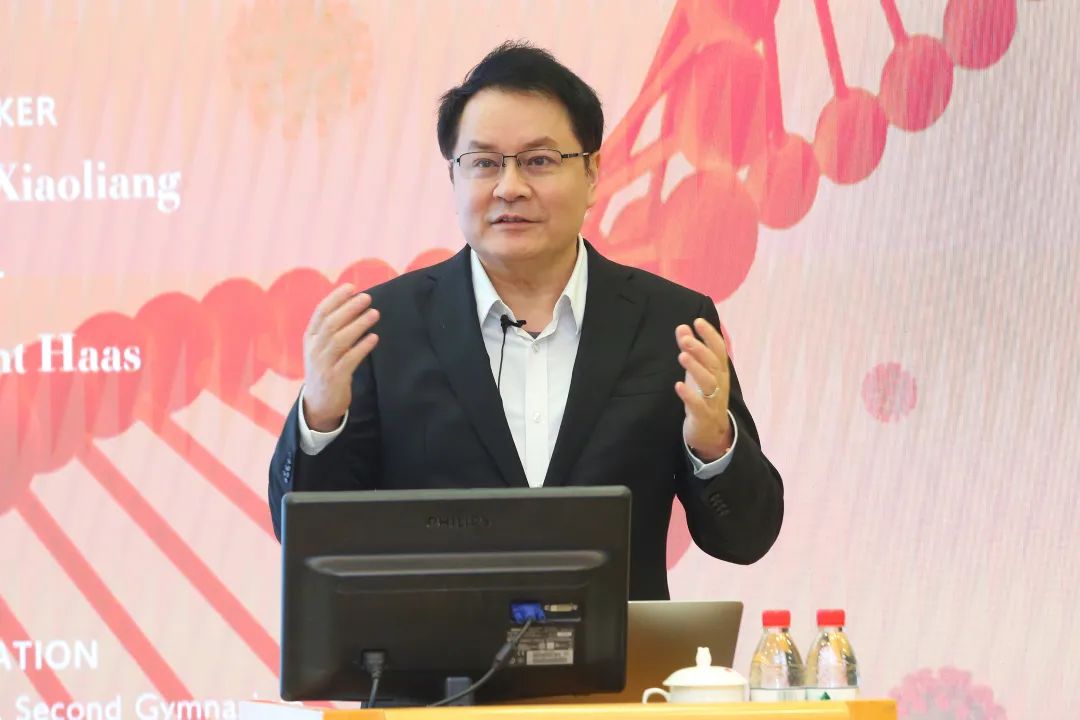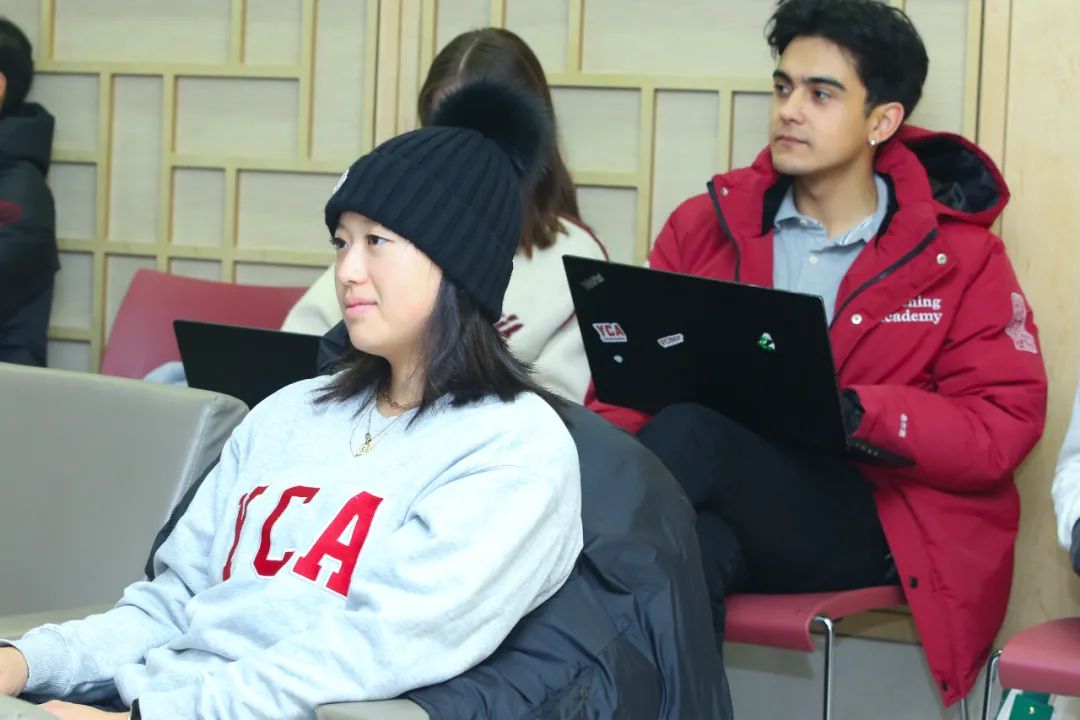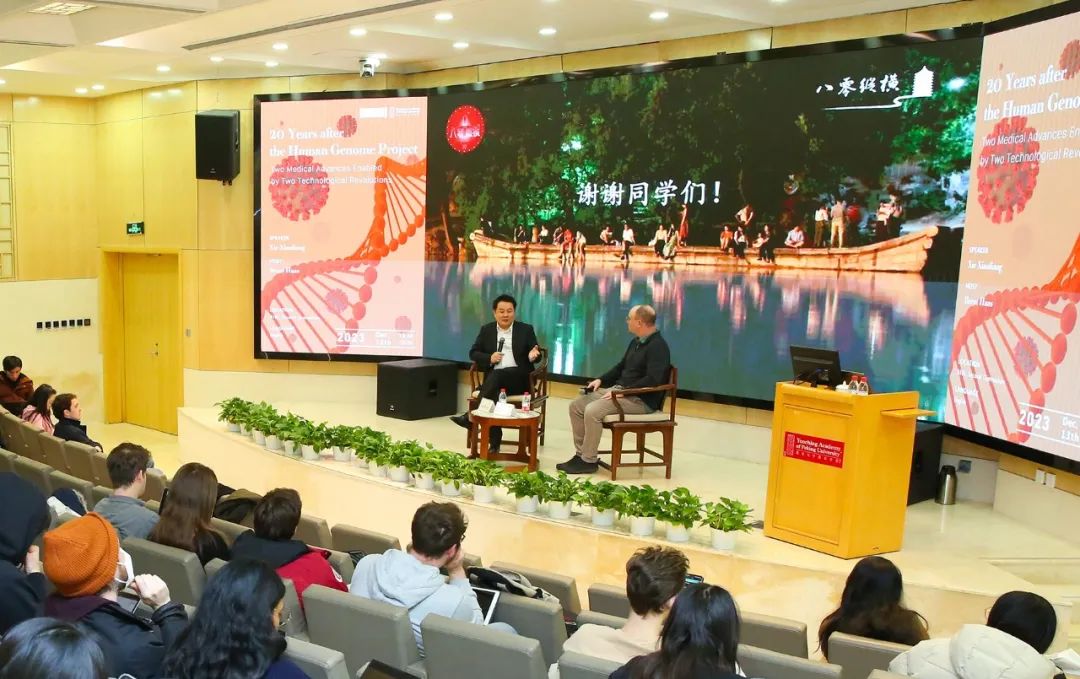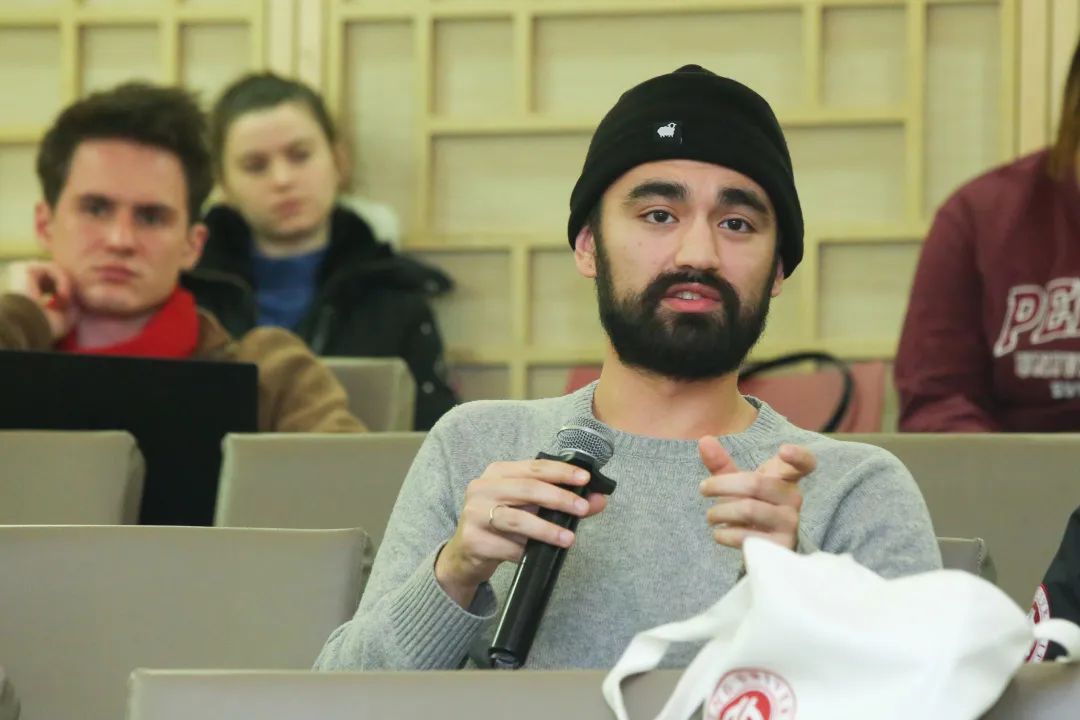On December 13, Professor Xie Xiaoliang, the Lee Shau-kee Professor, Director of the Changping Laboratory, and head of the Faculty of Sciences of Peking University, delivered a lecture titled “20 Years after the Human Genome Project: Two Medical Advances Enabled by Two Technological Revolutions” at Yenching Academy of Peking University. Prof. Xie, a world-renowned biophysical chemist and member of the Chinese Academy of Science, was the fifth speaker at our Topics in China Studies Lecture Series for the 2023-2024 academic year. The lecture was hosted by YCA Associate Dean Brent Haas.

Interview Notes
Prof. Xie began by recalling the groundbreaking birth of the world’s first in vitro fertilization (IVF) baby using the MALBAC technique developed by his lab. In early 2013, a couple confronting the challenge of a monogenic disease sought assistance from Prof. Xie’s group to conceive a healthy baby of their own. Collaborating with Prof. Qiao Jie’s group at Peking University Third Hospital, they tackled the case designated as Clinical Case 1. On September 19, 2014, the couple welcomed their daughter, the world’s first IVF baby. He vividly remembered the moment – the newborn girl smiling at birth – and expressed that bringing her into the world was one of his most gratifying achievements. He was happy to receive a handmade Teacher’s Day card from the nine-year-old girl last September.
Prof. Xie stressed the importance of ethical issues concerning biomedical science, particularly regarding preimplantation genomic screening, which must strictly follow ethical guidelines. He cited the controversial case in which a Chinese scientist announced the creation of genetically edited twin girls immune to HIV infection. Prof. Xie deemed such practice unnecessary and unacceptable, stressing that safer and more effective measures for HIV prevention exist without resorting to gene modification. Moreover, gene-editing may result in unknown risks, leaving the genetically edited babies and their potential offspring (if there will be any) vulnerable to latent dangers. Thus, he condemned practices like the 2018 case as violations of the ethics of science.
Prof. Xie talked about his interdisciplinary study and scientific research. A chemistry major at Peking University, he also attended courses in other schools and departments, such as physics, mathematics, and radio electronics, preparing himself for future scientific research and innovation. He highlighted the challenge scientific workers face in maintaining and enhancing their capacity for innovation. Prof. Xie exemplified this by continuously exploring various disciplines, from physical chemistry and biophysics to biochemistry, molecular biology, genomics, and clinical medicine. He emphasized that in his research group, the students and teachers who make more significant contributions to the research often have a profound knowledge of mathematics or physics, with a stronger competence in modeling, code writing, and data analysis. He emphasized the importance of interdisciplinary collaboration in mathematics, physics, chemistry, computing, and life science in addressing fast-changing paradigms of biomedical research. Prof. Xie hoped that YCA students could adopt interdisciplinary and global perspectives in their studies to innovate and make substantive achievements.
Review of the Lecture
Prof. Xie briefly introduced Gregor Mendel’s experiments with edible peas, illustrating the inheritance patterns of genes. He explained that offspring inherit one allele of a gene from each parent, contributing to individual variability. All the base sequences in a cell are the same except for a 1:1000 difference, which determines individual variability.

Completing the Human Genome Project (HGP) in April 2003 marked a significant milestone in human history, providing researchers with foundational information about the human genome’s sequence and identifying over 20,000 human genes. Years after the accomplishment of the HGP, a new-generation sequencing revolution took place. It costs a few hundred dollars to complete gene sequencing within a day. The new-generation sequencer brings new medical alternatives. DNA sequencing has etiological significance, helping with individualized treatment and prevention programs.
The emergence of new-generation sequencing technology has ushered in a second technological revolution: single-cell genomic technologies. These advancements enable the simultaneous measurement of thousands of genes in thousands of individual cells from a single specimen, fundamentally altering the landscape of biology and medical science.

As a result of these technological revolutions, two significant medical advances have emerged. Firstly, preimplantation genetic testing has become a possible and practical alternative. With China’s large population and a significant number of individuals suffering from hereditary diseases — totaling around 4,000 known monogenic diseases — the need for accurate genetic testing is paramount. A point mutation or change in copy numbers, like a microdeletion, causes a disease. For example, if a father has a hereditary disease, there is a 50% chance that, following Mendel’s laws, it will be passed on to the offspring, making it a random incident.
The MALBAC technology, developed by Prof. Xie’s group, enables accurate testing of copy numbers and point mutations and is used in the preimplantation genetic diagnosis for IVF. Non-invasive preimplantation genetic testing (PGT), widely used for monogenic diseases, does not necessitate clustered regularly interspaced short palindromic repeats (CRISPR). In China alone, over 4,000 couples grappling with monogenic diseases have welcomed babies with the assistance of PGT technology.
Another significant medical advancement facilitated by single-cell genomics emerged to deal with the COVID-19 pandemic. By analyzing mutations’ impacts on immune evasion and ACE2 binding affinity, Prof. Xie and his research group established a model of SARS-CoV-2 RBD evolution, which predicts mutations in the SARS-CoV-2 genome to increase immune evasion. The prediction model helps develop antibody drugs and vaccines, such as SA55, a broad neutralizing antibody against ACE2-utilizing subvariants.

Q&A Time
Q: CRISPR has long been a hot topic. How can we ethically use CRISPR for medical purposes?
A: We must not allow human germline genome editing. He Jiankui’s experiment with gene-edited babies violates both ethical and academic codes. CRISPR can be widely applied, for sure. But it must not be used to create genetically edited babies.
Q: You mentioned that the neutralizing antibody SA55 binds to an epitope rarely addressed by existing antibodies elicited by the current human immune background, granting it exceptional neutralization breadth. However, could the widespread use of such a drug lead to faster evasion of viruses? Is it applicable to a limited number of cases?
A: Widespread use of SA55-neutralizing antibody drugs could prompt immune evasion if used globally. But not in the near future. SA55 antibody was developed one and a half years ago, and immune evasion has not been observed yet. While SA55 can be cheaper than Paxlovid, it is not cheap enough for worldwide use in the short term. More importantly, we can identify many other antibodies because we have more than one gene sequence.
